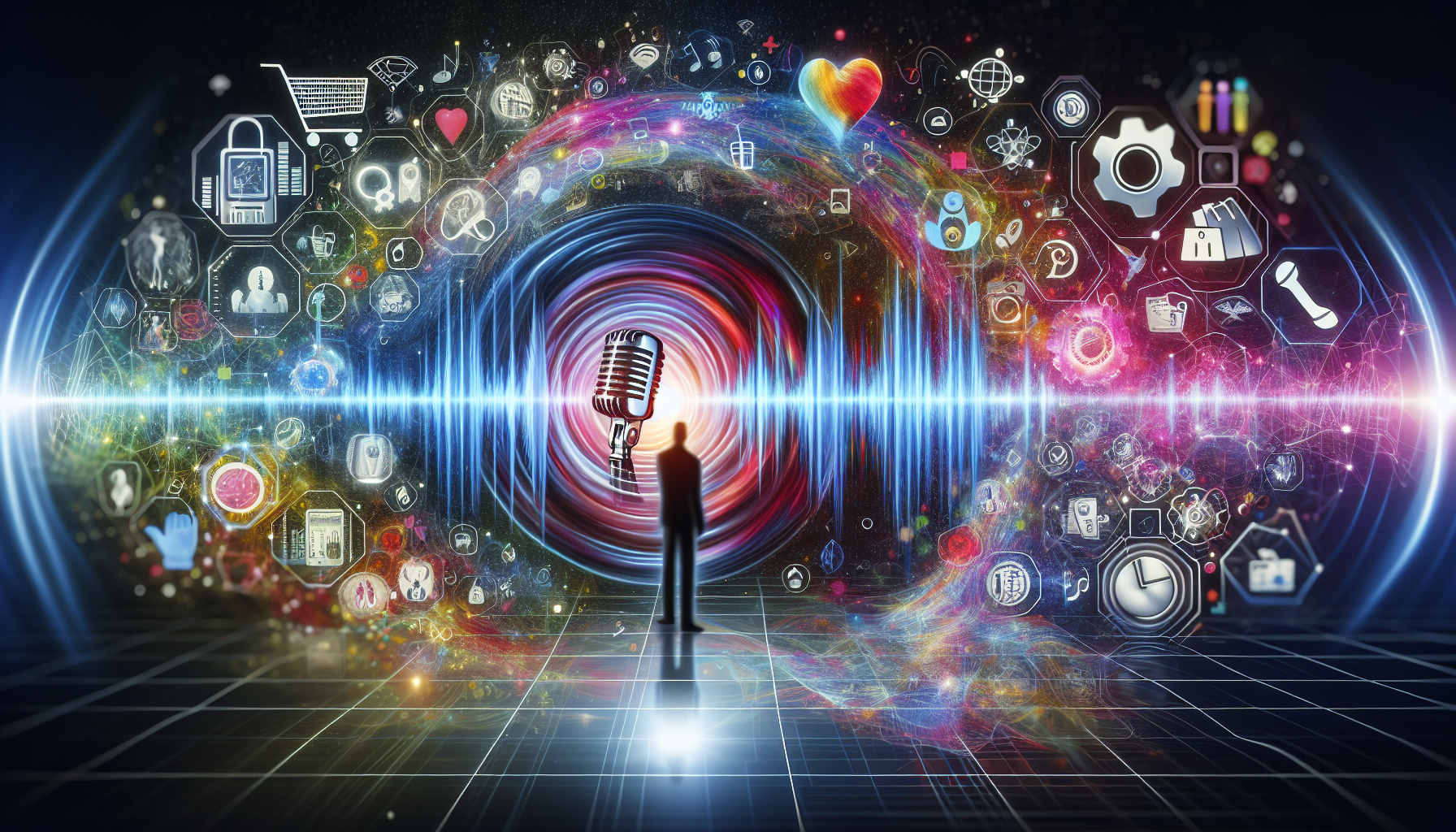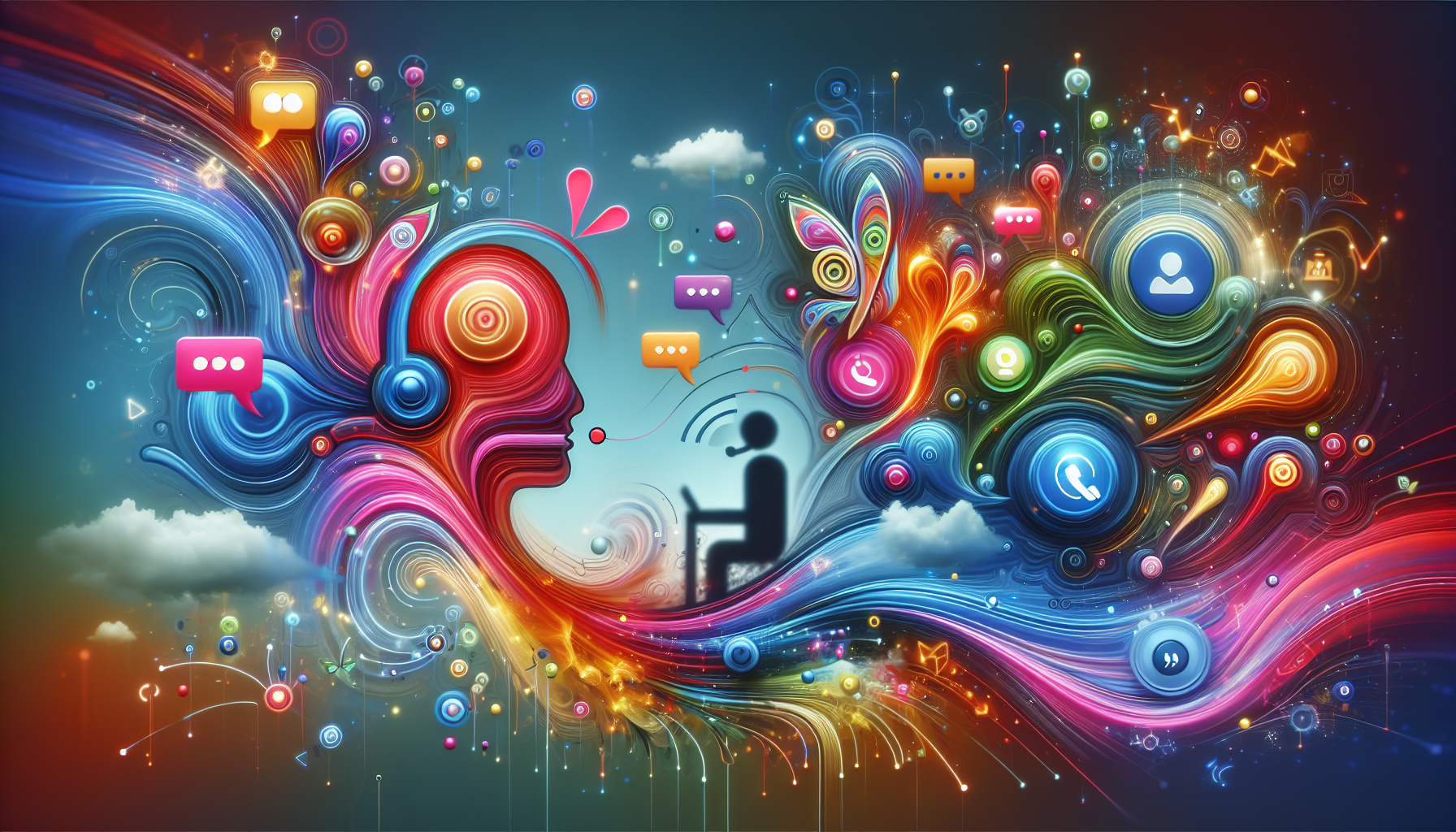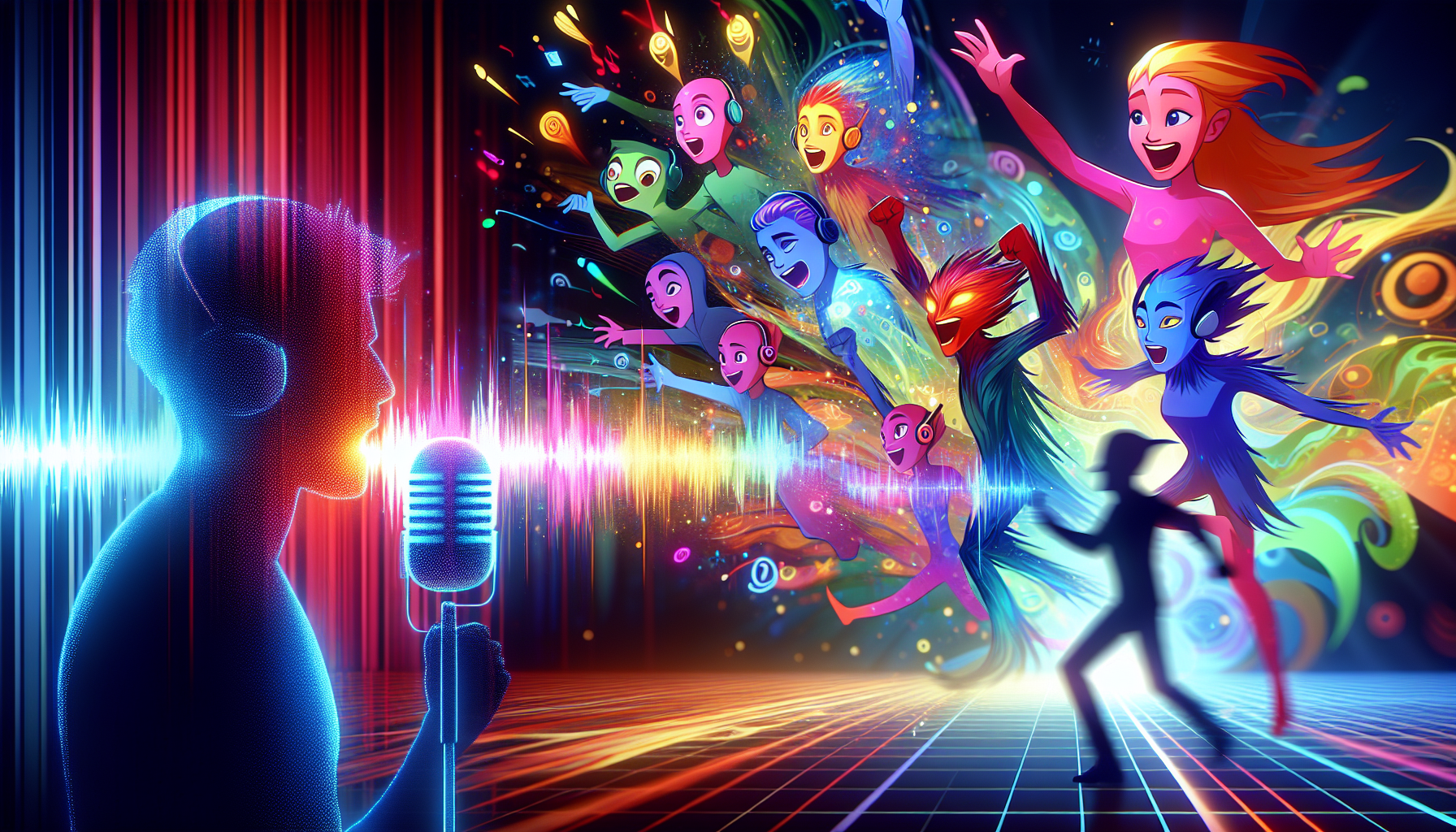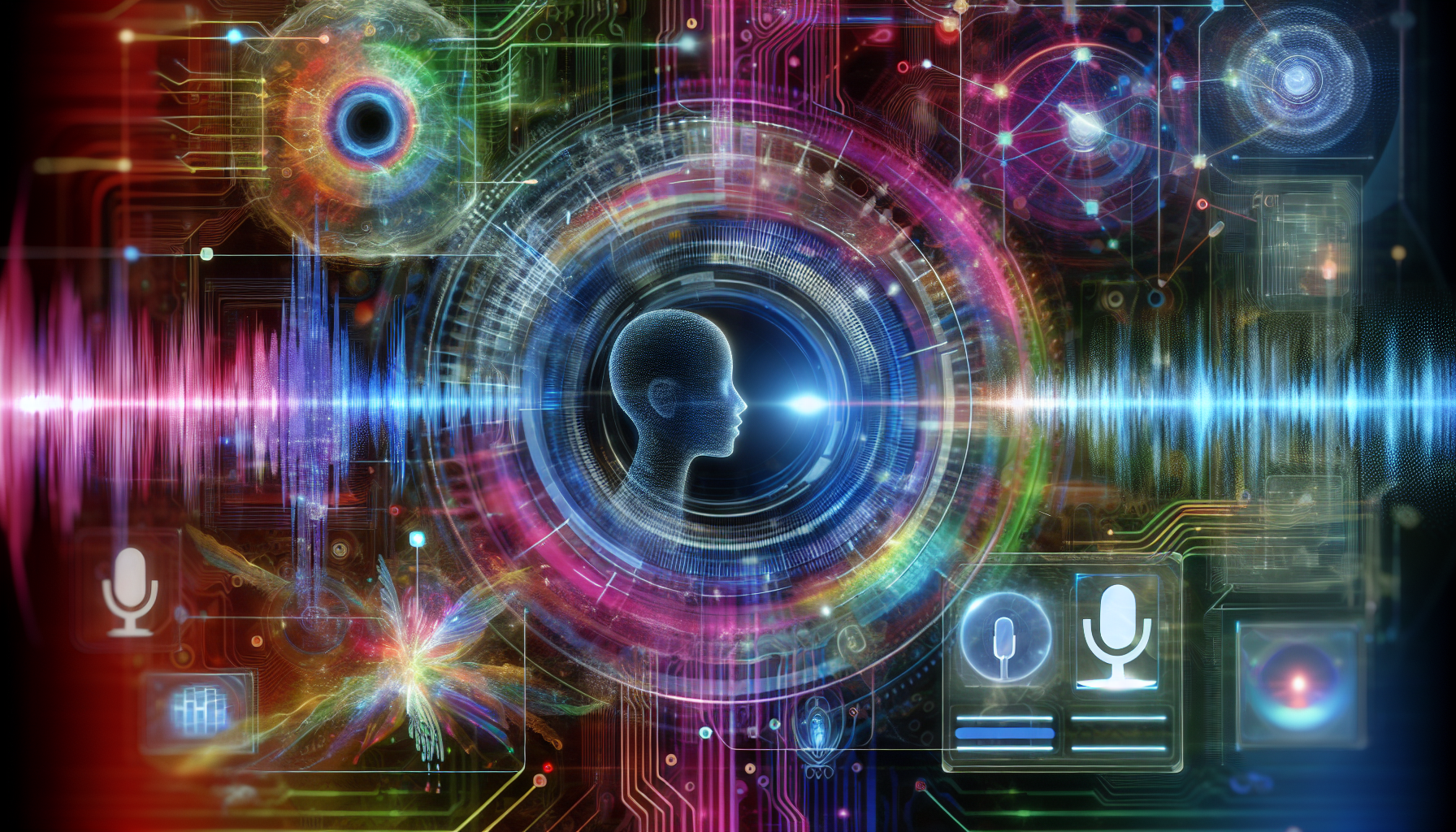Paul
Oct 19, 2024
Table of Contents |
|
In today’s fast-evolving digital landscape, voice customization has become a game-changer across multiple industries. AI-powered voice tools are no longer limited to generating standard, one-size-fits-all voices. Instead, they offer highly customizable voice profiles tailored to meet the unique demands of various sectors. From healthcare and entertainment to customer service and education, businesses are now using AI voice technology to deliver personalized experiences, ensuring their brand’s voice aligns perfectly with their target audience. Whether it’s adjusting tone, speed, or even accents, AI voice generator tools create a new way for companies to communicate and engage with their customers, making each interaction more authentic and effective.
Key Takeaways
- Voice customization is about creating unique auditory experiences that resonate with audiences, enhancing user engagement and brand connection.
- AI voice technology enables personalized experiences across industries, from marketing to education and healthcare, with improvements in user interactions and efficiency.
- Future trends in AI voice customization include hyper-personalization and emotional intelligence, aiming for more empathetic and responsive AI interactions.
Introduction to AI Voice Technology
AI voice technology refers to the use of artificial intelligence to generate human-like voices that can be used in various applications, such as virtual assistants, voice assistants, chatbots, navigation systems, audiobooks, and more. The journey of AI voice technology began in the 1950s with the development of the first speech synthesis systems. These early systems were rudimentary, capable of producing only basic, robotic-sounding speech. However, they laid the groundwork for future advancements.
The 1990s marked a significant turning point with the advent of more sophisticated speech synthesis systems and the introduction of virtual assistants like Siri, Cortana, and Alexa. These virtual assistants brought AI voice technology into the mainstream, showcasing its potential to interact with users in a more natural and intuitive manner. Over the decades, continuous improvements in machine learning and natural language processing have propelled AI voice technology to new heights, making it an integral part of our daily lives.
Current State of AI Voice Technology
Today, AI voice technology has reached an impressive level of sophistication. Modern AI voice generators can produce highly realistic and natural-sounding voices that closely mimic human speech patterns, accents, and even emotions. This technology has evolved to the point where it can convert written text into spoken words with remarkable accuracy, allowing computers and devices to “read” text aloud to users.
The advancements in AI voice technology have enabled it to understand and emulate the subtleties of human speech, making interactions with virtual assistants, chatbots, and other AI-driven applications more seamless and engaging. Whether it’s providing directions through a navigation system, narrating an audiobook, or assisting with daily tasks, AI voice technology has revolutionized the way we interact with machines, making them more accessible and user-friendly.
Understanding Voice Customization

Voice customization isn’t just about creating a synthetic voice; it’s about crafting a unique auditory experience that resonates with your audience. Adjusting parameters such as pitch, tone, speed, and accent allows AI voice technology to produce voices that align with specific brand identities and user preferences. Such customization ensures that voice interactions are not just heard but felt, thereby improving the overall user experience.
Creating a custom neural voice involves several steps:
- First, a voice persona is designed to align with the intended character or brand image.
- High-quality training data is then used to generate synthetic voices, ensuring they are engaging and relatable. Although meticulous, the process results in a voice that leaves a lasting impression.
Custom voices offer numerous benefits. They increase interaction engagement and foster a stronger connection with users. Whether for an educational app or a customer service bot, a well-crafted voice can significantly change the user experience, making it more personal and memorable.
AI Voice Technology: The Backbone of Customization
At the heart of voice customization lies advanced AI voice technology. Machine learning algorithms, deep learning models, and speech synthesis techniques work together to generate realistic, human-like voices. The recent advancements in neural Text-to-Speech (TTS) systems leverage deep learning to create natural and expressive human speech that closely mimics human voices.
How Deep Learning Powers Voice Customization |
At the core of voice customization is deep learning 🧠—a type of advanced AI that works like a super-smart student constantly learning from examples.
So, thanks to deep learning, AI voice tools can customize voices to fit exactly what businesses need, giving every brand its own unique sound 🗣️🔧! |
Techniques like convolutional neural networks (CNNs) and recurrent neural networks (RNNs) are key in enhancing the realism and contextual understanding of AI voices. These technologies process complex inputs and generate nuanced outputs, allowing AI voices to adapt and respond accurately to various voice commands.
Bringing AI Voices to Life with Neural Networks |
Neural networks like CNNs 🧩 and RNNs 🔄 are like the brainpower behind AI voices. They help the AI "understand" what’s being asked and create responses that sound more human-like.
Together, these networks help AI voices sound smooth and respond accurately, making them feel more like real conversations |
Machine learning algorithms’ continuous learning capability allows AI voices to evolve over time, becoming more refined and accurate with each interaction. This adaptability is crucial to the ongoing AI voice revolution, enabling more natural and engaging user experiences across various applications.
AI Voices That Keep Getting Smarter |
AI voice technology is like a student who’s always learning 📚✨. Thanks to machine learning algorithms, these voices don’t just stop at one skill—they improve with every interaction.
This continuous learning ability is key to why AI voices keep getting better over time—becoming more personalized and natural for every conversation. |
How AI Voice Tools Work
The AI voice generation process is a multi-step procedure that transforms written text into spoken words. Here’s a breakdown of the key steps involved:
- Text Analysis: The process begins with the AI voice generator analyzing the written text. This involves identifying the words, phrases, and sentences that need to be converted into speech. The AI system uses natural language processing (NLP) techniques to understand the context and meaning of the text, ensuring accurate pronunciation and intonation.
- Speech Synthesis: Once the text is analyzed, the AI voice generator employs machine learning algorithms to generate synthetic speech. This step involves creating a voice that mimics human speech patterns, accents, and emotions. The AI system uses deep learning models to produce speech that sounds natural and expressive, closely resembling human speech.
- Voice Customization: One of the standout features of AI voice technology is its ability to customize the generated voice. Users can adjust various parameters such as pitch, tone, pacing, and even accent to create a voice that suits their specific needs. This customization ensures that the generated voice aligns with the intended character or brand image.
- Audio Output: The final step is to output the generated speech as audio. This audio can be played back through a device or integrated into various applications, such as virtual assistants, chatbots, or audiobooks. The result is a seamless and engaging auditory experience for the user.
Tailored AI Voices in Marketing and Advertising

In marketing and advertising, quickly and effectively engaging with consumers is paramount. AI voices facilitate interactive advertising by responding to user queries in real-time, making ads more engaging and personalized. Such dynamic interaction not only captures attention but also drives higher conversion rates.
Smaller businesses with limited budgets find AI-generated voices to be a cost-effective solution. These businesses can quickly generate variations of audio ads using different voice generators, enabling extensive A/B testing without the need for expensive human voice actors. This flexibility is a game-changer, enabling brands to find the perfect voice that resonates with their target audience.
What is A/B Testing and Why Do Businesses Need It? |
Think of A/B testing as a fun experiment 🧪🔍! It’s a method where you compare two versions of something—like an ad, a website, or even a voice—to see which one works better.
|
Another significant benefit is localization. AI technology can generate translated voice tracks in multiple languages, simplifying the process for brands to reach a global audience. Real-time translation capabilities maintain cultural and contextual nuances, enhancing the authenticity and effectiveness of multilingual advertising campaigns.
Customer Service with Customized AI Voices

Customer service is another domain where AI voice technology is making a significant impact. High-quality audio recordings are crucial for training custom voice models, ensuring the resulting voices are professional and consistent. This consistency is crucial for maintaining a reliable brand image across various customer service interactions.
Chatbots, voice assistants, and interactive voice response (IVR) systems increasingly use AI voices. These applications offer a more organic and engaging interaction compared to traditional text-based chatbots. AI voices can handle inquiries, direct calls, and provide contextually relevant answers to voice commands, significantly improving user satisfaction. Additionally, virtual assistants can enhance these interactions further.
Adapting to diverse languages and accents makes AI voices a valuable asset for businesses with a global customer base. AI voices can significantly reduce the time and resources needed to navigate the customer journey, enabling more efficient and effective service delivery.
How AI Voice Technology Reduces Time and Resources in Customer Service |
Imagine a company using traditional methods for customer service, like training human agents or recording voice prompts for each new product or service. This can be time-consuming and expensive 💸, especially when multiple languages or accents are needed for a global audience 🌍.
Now, with AI voice technology, things move a lot faster:
|
AI Voices in Education
In education, AI voices are changing how we learn. As personalized tutors, they bring audiobooks and e-learning courses to life, making them more engaging and accessible for auditory learners. This is particularly beneficial for students who retain information better through listening.
Advanced text-to-speech systems use neural networks to produce realistic synthetic voices, bettering the educational experience by making the content more relatable and enjoyable. Educators can modify voice characteristics such as emphasis, speed, and pauses to improve comprehension and retention.
AI voices support diverse languages, expanding the reach of educational resources to a global audience. If you want to dive deeper into how AI voice tools are transforming e-learning, click here!
Entertainment Industry: Bringing Characters to Life with AI Voices

The entertainment industry is perhaps the most visible beneficiary of AI voice technology. AI voice synthesis allows creators to develop custom voices for animated characters and video games, enhancing character portrayal and immersion. This technology enables more dynamic and expressive performances, bringing characters to life in previously unimaginable ways.
AI voice cloning offers significant cost benefits by reducing the need for extensive voice recording sessions and multiple human voice actors. This is especially beneficial in the gaming sector, where diverse character creation often requires multiple voices. AI voice generation can also recreate the voices of deceased actors, allowing the continuation of beloved characters in new content. Additionally, AI voice generators increase the efficiency of this process.
Advancements in AI voice technology also enhance the quality of voiceovers and dubbing, making international media more accessible and enjoyable. This innovation pushes the boundaries of creativity, allowing artists and creators to explore new opportunities and experiment with storytelling through personalized narratives.
AI Voice Healthcare: Personalized Patient Interaction
Healthcare is another field where AI voice technology is driving significant improvements. AI voices offer personalized healthcare support, delivering medication instructions and appointment reminders to help patients manage their health. Virtual therapy sessions and educational content are also enhanced by AI voices, making them more engaging and accessible.
Customizable AI voice solutions serve as tools for Augmentative and Alternative Communication (AAC), aiding patients with communication challenges. These tools are particularly valuable for individuals with speech impairments, providing a vital means of interaction and engagement.
What is AAC? |
AAC is a communication system designed to help people who have trouble speaking. Imagine if talking wasn’t easy for you—AAC gives you a way to express yourself through other methods!
Why is AAC Important?
Customizable AI voice solutions play a big part in this by giving users a voice that matches their personality—whether it’s soft and friendly, or energetic and expressive! 🎙️✨ |
AI-driven voice tools also continuously monitor vital signs, enabling early alerts to healthcare professionals for necessary interventions. This proactive approach helps manage chronic conditions and prevent health emergencies, ultimately improving patient outcomes and satisfaction.
How AI Voice Assistants Improve Accessibility
AI voice assistants are impacting accessibility, making technology more inclusive for individuals with disabilities. Text-to-speech technology converts written content into spoken words, providing essential access for people with visual impairments. These advancements ensure that everyone can enjoy and benefit from digital content, regardless of physical limitations.
For individuals with intellectual disabilities, AI voice applications facilitate communication and interaction with their environment, enhancing independence and quality of life. In smart homes, voice-enabled technology simplifies user interactions, enabling seamless navigation and control without traditional text input or screen reliance.
AI voice technology also plays a significant role in the workplace, where accessible technologies are crucial for creating inclusive environments. Improving communication tools and enhancing user experience, AI voice assistants help bridge the gap, making workplaces more accommodating for individuals with disabilities.
Future Trends in AI Voice Customization

Looking ahead, the future of AI voice customization is promising and full of potential. Future advancements are expected to enable seamless switching between multiple languages, making global communication more accessible and efficient.
Hyper-personalization is another exciting trend. Future AI voice systems will cater to individual user preferences and contexts, providing a truly customized experience. Integrating emotional intelligence will allow AI chatbots to recognize and respond appropriately to users’ emotional tones, leading to more supportive and empathetic interactions.
As AI voices continue to evolve, addressing biases and ensuring data transparency will be essential. Robust security measures will also be crucial to protect sensitive information shared during voice interactions, complying with regulations like GDPR. The future is bright, with AI voice technology set to transform various industries in unprecedented ways.
Summary
In summary, AI voice customization is redefining how industries interact with their audiences, creating more engaging, personalized, and efficient communication. From marketing and customer service to education and healthcare, the applications of AI-generated voices are vast and transformative. The continuous advancements in AI voice technology promise even greater possibilities for the future.
As we move forward, the integration of emotional intelligence, hyper-personalization, and multilingual capabilities will further change the user experience. The journey of AI voice customization is just beginning, and its potential to transform our world is limitless. Embrace the change and explore the possibilities that AI voices can offer.
Frequently Asked Questions
What is AI voice customization?AI voice customization allows you to tweak elements like pitch, tone, speed, and accent to create unique synthetic voices that fit your brand or personal style perfectly. It’s a cool way to make communication feel more personalized! |
How is AI voice technology used in marketing?AI voice technology boosts marketing by making ads more interactive and engaging, while also cutting production costs and allowing for faster localization. This way, brands can connect with a global audience more effectively. |
What are the benefits of AI voices in customer service?AI voices in customer service enhance engagement, improve user satisfaction, and increase efficiency by effectively handling inquiries in multiple languages and accents. This leads to a smoother experience for customers. |
How do AI voices enhance education?AI voices enhance education by providing personalized support and improving accessibility, making learning more engaging for all students, especially those with visual impairments or reading challenges. This technology truly helps to create a more inclusive learning environment. |
What future trends can we expect in AI voice customization?You'll likely see AI voice customization become even more personal, with voices that can adapt to your emotions and switch between languages seamlessly. Plus, expect increased focus on security to keep your preferences safe, making the experience more effective and realistic. |
Convert Your Voice with AI
Make your voice sound like those of famous arists.
Join Lalals and use our hyper-realistic voice converter now.